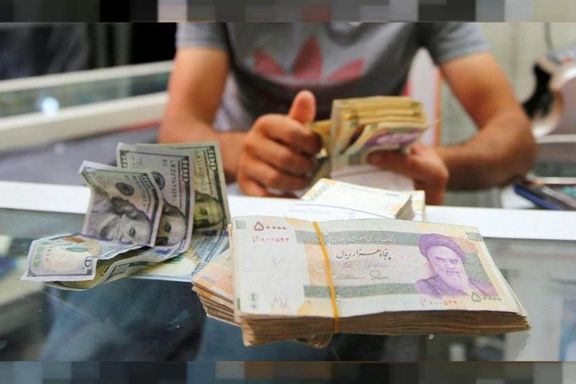Iran's Currency Rises On Optimism Over A Nuclear Deal

Optimism over the possibility of a nuclear deal with the United States has strengthened Iran's battered currency for a second time in the past two weeks.

Optimism over the possibility of a nuclear deal with the United States has strengthened Iran's battered currency for a second time in the past two weeks.
The rial rose to 259,000 on Saturday and to 253,000 rials on Sunday against the US dollar in Tehran’s unofficial currency exchange market. In December, at the height of uncertainty over nuclear talks in Vienna, the rial had dropped to nearly 310,000 rials against the US dollar.
The strengthening of the national currency has also pushed down the price of gold, particularly coins which many Iranians buy as investment to protect their savings.
Etemad newspaper on Sunday attributed the strengthening of the rial to a Reuters report on Thursday which claimed Iran and world powers negotiating for the restoration of the 2015 nuclear deal (JCPOA), had drafted an agreement which among other things included the release of around $7 billion of Iran’s assets frozen in South Korean banks since 2018. A nuclear agreement would lift many US economic sanctions and allow Iran to freely export oil, the main source of revenue for the country.
Iran’s Foreign Minister Hossein Amir-Abdollahian, and the US State Department said during the week that substantial progress has been made. Unnamed Western diplomats told the media that a deal could potentially be reached very soon. An agreement in Vienna could provide the cash strapped Central Bank of Iran (CBI) with resources which it can inject into the currency market to support the rial and finance imports.
Last week the Iranian delegation, including officials of the Central Bank of Iran (CBI) and the National Iranian Oil Company (NIOC), visited Seoul to discuss the release of Iran's frozen assets and resumption of oil trade when and if US sanctions are lifted.
Japanese oil and energy corporation ENEOS has also announced its readiness to resume Iranian oil imports within two to three months of any revival of the JCPOA.
A trade source last week told Argus, a London-based media organization, that in anticipation of the lifting of sanctions, the NIOC is reaching out to key customers to discuss resumption of crude sales, particularly the condensate Iran has placed in floating storage.
The rial began to lose value against the dollar and other major currencies in late 2017 when former US President Donald Trump made clear he was serious in his plans to withdraw from the 2015 deal and subject Iran to draconian sanctions which would hugely limit the country's access to petrodollars.
The rial fell by eightfold since 2017 and in the closing weeks of 2021 even dropped to 310,000 but in the past six weeks despite the uncertainty over the restoration of the deal it has regained some of its value due to rising optimism over a nuclear deal and lifting of US sanctions.
Much higher oil exports to China in recent months might have injected more hard currency into the market.
China has apparently imported an average of 850,000 barrels of Iran's sanctioned crude oil and oil petroleum products worth over $20 billion in 2021. Despite US sanctions, China has continued buying Iranian larger and larger amounts of Iranian crude.